A light ray travelling in glass medium is incident on glass-air interface at an angle of incidence . The reflected () and transmitted () intensities, both as function of , are plotted. The correct sketch is:
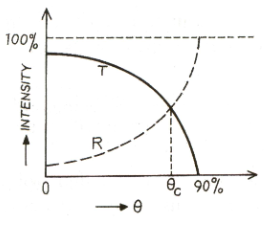

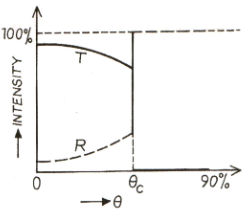
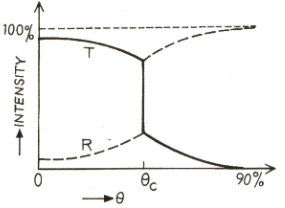

Important Questions on Refraction of Light at a Plane Interface : Total Internal Reflection : Optical Fibre
A ray of white light is incident on the interface of glass and air, as shown. The angle of incidence is such that green light just suffers total internal reflection. The ray of light emerging from glass to air contains:
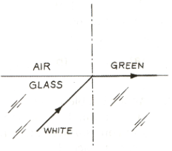
A ray of light travelling in water is incident on its surface open to air. The angle of incidence is , which is less than the critical angle. Then, there will be:
A transparent solid cylindrical rod has a refractive index of . It is surrounded by air. A light ray is incident at the mid-point of one end of the rod as shown in figure. The incident angle for which the light ray grazes along the wall of the rod is:

The angle of a prism is ‘’. One of its refracting surfaces is silvered. Light rays falling at an angle of incidence on the first surface returns back through the same path after suffering reflection at the silvered surface. The refractive index , of the prism is:
A ray of light in vacuum is incident on a glass slab at angle and refracted at angle along as shown in the figure. The refractive index of the material of the glass slab is . The optical path length of the light ray from to is:
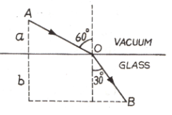
In figure, the optical fibre is long and has a diameter of . If a ray of light is incident on one end of the fibre at angle , the number of reflection it makes before emerging from the other end is close to : (refractive index of fibre is and )

A transparent cube, made of a material of refractive index , is immersed in a liquid of refractive index . A ray is incident on the face at an angle (shown in the figure). Total internal reflection takes place at point on the face .
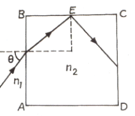
Then must satisfy:
